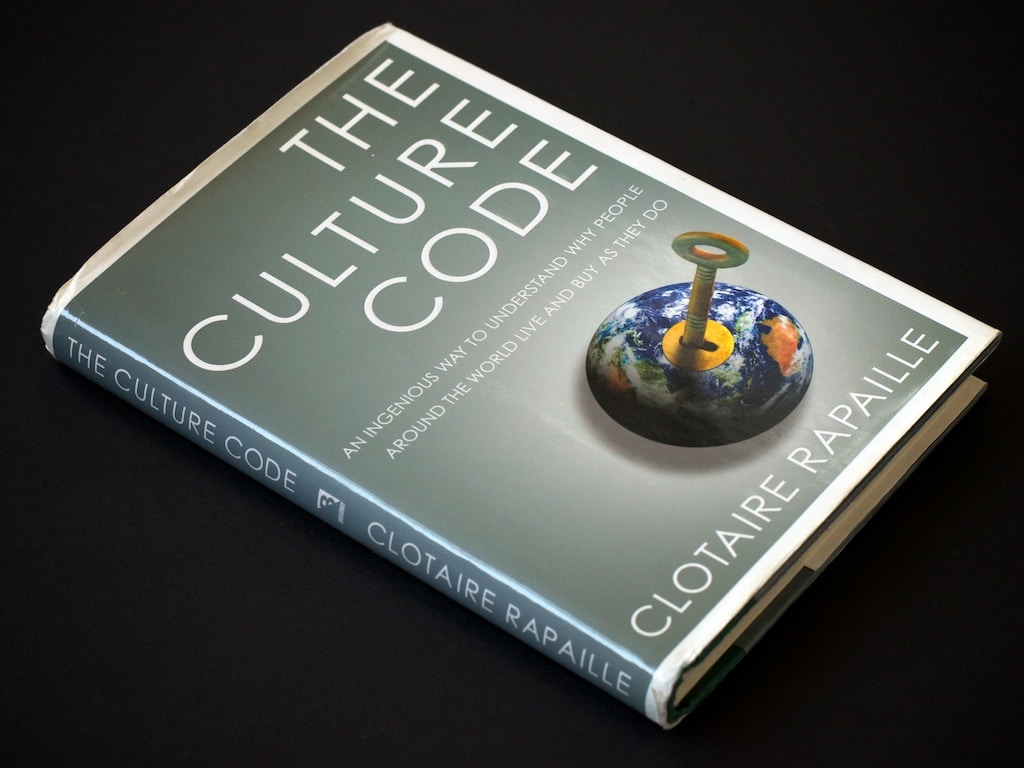
Don’t forget your audience


The real payoff in this book is the explanation of the ten “engines” of remarkable products. This is light-years beyond the fumbling attempts to explain why certain companies are the favourites that some “branding experts” roll out. Going beyond shallow statements about branding, this book gets into the mechanics of the experiences that people talk about.

What a great hack. I love how small things like this can really influence consumer behaviour.
I just got back from a stay at a Caribbean all-inclusive resort. As is typical for these resorts, people complained about the food quality at the buffets, preferring instead the resorts’ a la carte style restaurants. This widely held belief is not the result of any actual disparity in the food, but of several tricks played on our minds by the experience.
I’ve stayed at many of these resorts, and heard the same thing at all of them: the buffet food is mostly inedible, and the restaurant food is the only decent thing to eat. In fact, this belief is so universal that visitor reviews of the resorts carry this refrain consistently. The resorts even reinforce this illusion by touting a high number of restaurants (vs buffets) as a feature.
But the food served at each is really the same. At most resorts the food is prepared in the same kitchen, by the same cooks, with the same ingredients. Many of the restaurants are adjoined onto the buffets, though the architectural details may obscure this fact somewhat. Other restaurants serve as buffets during the day, often for breakfast or lunch.
There are three things at work that all contribute to the perceived disparity of quality:
Paradox of choice
The paradox of choice suggests that the more options presented to us, the less satisfied we’ll be with our choice.
So the buffet – with all of the single items on it that can then be combined in thousands (or millions) of ways – offers so much choice that we can’t be happy with our decision. No matter what we choose, we are always wondering if there wasn’t a better decision, a more satisfying combination.
Restaurants have a narrow range of options available to its patrons, as they operate with a price-fix five course format (soup, salad, appetizers, entree, dessert). At each stage of the meal there might be only one or two options, with the entree stage offering as many as eight options. But because the meal is broken up into stages with a comparatively small number of options at each sage, it’s easier to discriminate between each option. By forcing us focus our attention on mall decisions, we end up more confident in our choices.
Where the buffet challenges us with “what am I going to have for dinner” the restaurant makes it easier, “would I prefer tomato bisque or seafood chowder.”
Scarcity
While the buffets have a come as you please, no reservations required policy, the restaurants offer more of a challenge. Reservations are required, and are often made days in advance. Resorts may also limit the number of times you can visit the restaurants per week. The dress code at the restaurants is usually stricter than the buffet as well. All of this means that it’s more challenging to eat at the restaurants, it takes more work, more planning; and this builds in additional value to the experience. We feel it must be better, because it was harder to obtain.
Once you’re in, scarcity also plays a role with how we’re shown the food. At the buffet the food is piled high in long rows. Anything you could want to eat is there, enough to feed an army. But at the restaurant you only see the food you’re actually going to eat, and the portions are controlled for you. You see less, and so the food seems to be more scarce than at the buffet. That scarcity builds in even more value for the restaurants.
Presentation
“That looks gooood.” The way our food looks can greatly affect our receptions of it. If you look at any modern cookbook you will see gorgeous photos of elaborately presented food. This elaborate presentation doesn’t change how it tastes, but it makes the food look more appetizing.
Watch people at a buffet and you’ll see them take a plate and pile food onto it wherever it will fit, sometimes stacking additional food on top. It’s about as far from elegant as you can get. At the restaurant your food is plated. Your food s considered, it’s arrangement is designed to look appetizing. The food simply looks better.
There is one other reason that people hate the buffets: they get bored. Buffet patrons take more types of food than they normally would. The thinking as they move through the buffet is along the lines of “Does this look good? Yes, take some; no, move on.” So people end up with ten things on their plate instead of three. At the onset this isn’t a problem, but as this repeats itself over the week we end up eating the same meal multiple times. This isn’t the result of a mind-trick as it is poor planning on our part.
There’s not a lot that the resort can do to change this phenomenon, not without some pretty serious changes to how it operates. But I don’t think they want to change anything either – it would cost too much and be too risky for them.
I suppose a resort could try positioning itself as a culinary experience which – if executed properly – could offer a strong point of differentiation for the brand. I find the brand differentiation in this sector to be especially weak, so anything would help.
I just finished a book that does a fantastic job of describing many of the ways we are influenced every day to act irrationally. I’ve had on my reading list for a very long time, and I’m stunned at how clearly I can see it’s lessons in my day-to-day life. Influence: The Psychology of Persuasion by Robert Cialdini explains the concepts well, and then supplies some strong examples and case studies that help flush out the concepts further.
There are six “weapons of influence”:
Reciprocity
When someone does something nice for you – even if you didn’t request it, or accept it – you feel compelled to return the favour in kind.
Commitment and Consistency
Once you’ve made a public commitment to an idea or goal, you feel compelled to honour that idea, and extensions of that idea.
Social Proof
Simply, you will do things that you see other people doing.
Authority
You will tend to obey those that you perceive as an authority figure, even if you are asked to perform objectionable acts.
Liking
You are more easily influenced by people you like.
Scarcity
You value things more highly if you believe that they are scarce.
Cialdini does a great job of flushing out these concepts in a compelling and relevant way. This book is a must-read for marketers.

I spent a good portion of my 20’s as a bouncer/doorman at various bars. I’ve seen a lot, and I really like how this video shows the difference between how we think things are happening, and the reality. It takes a while to load, but it’s worth the wait.
While I absolutely agree with the point this video makes, I’m posting it here because of the clever, and fun way that the agency makes the argument to have a little more time.
Here’s how you make a viral video. One thing I’ve noticed about viral videos, is that they’re earnest. They’re not overproduced. And they rarely give you the sense that the creators really thought that they should make this in order to go viral.
I also really liked the last 45 seconds or so. After watching the video, they make a plea for a small donation to their favourite charity. Having watched the video, don’t you feel like you owe them?
When Tim Horton’s recently announced that they’d be adding espresso to their lineup in a bid to take on Starbucks, I had to check the date to make sure it wasn’t April Fool’s Day.
This move is so stunningly ignorant of the brand, I question who is in charge at Tim Horton’s, and how disconnected are they from their customers. Tim Horton’s is defined as much by what it is, as what it isn’t. Tim Horton’s isn’t Starbucks. The two tribes couldn’t be further apart, or more clearly defined. So this move to capture some of the Starbucks audience is particularly puzzling. Nevermind that espresso doesn’t fit into the Tim Horton’s brand of simple, Canadian comfort food.
This is where Tim Horton’s jumps the shark. I eagerly await their next brand extension, but I’m not sure how they can get further from their audience and brand than this. Maybe sushi?